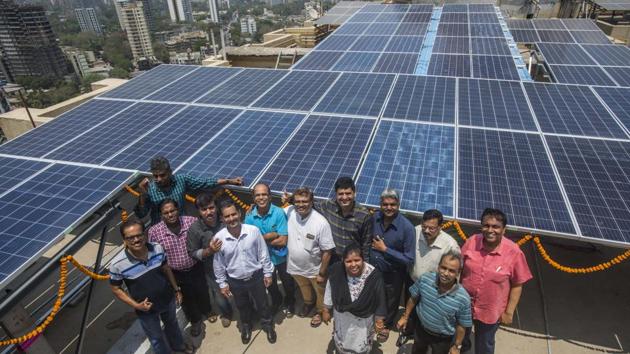India’s energy transition is now the world’s energy transition
This unfolding revolution is, however, hemmed in by legacy issues and overconfidence with short-term policy successes.
A decade ago India had less than 20 megawatts (MW) of solar power, had the largest number of people without access to modern energy, and had the reputation of being a naysayer in climate negotiations. The country now has 124,771 MW of renewable energy capacity (including large hydropower), has brought (intermittently) clean cooking energy to 720 million more people and new electricity connections to 350 million more people, and was critical to the Paris agreement on climate change while spearheading the International Solar Alliance. This story is not known well, not told well, and not always playing out well.

The European Union (EU) gets more than 30% electricity from renewables. Now four eastern European nations are blocking a proposal for net-zero emissions by 2050. The US got only 17.6% electricity from renewables in the 12 months ending April 2019 even as the Trump administration withdrew from the Paris Agreement. Rich countries need to act bolder and faster for other countries to hope for any remaining carbon space.
India’s progress looks more remarkable in comparison. India already gets 21% of electricity from renewables (Including large hydropower). CEEW researchers calculate that this could rise to 47% by 2040. Renewables provide 35% of the total generation capacity, against 41% in the EU and 20% in the US. Now, India is contemplating 500,000 MW of RE capacity by 2030. This massive growth in capacity addition is happening at much lower levels of per capita income or size of the electricity sector. This is what a leapfrog looks like.
This unfolding revolution is, however, hemmed in by legacy issues and overconfidence with short-term policy successes. The most important legacy issue is the financial health of distribution companies. When the UDAY scheme was launched in March 2015, discoms had outstanding debt of ₹4.3 lakh crore. Since then, 16 states issued bonds; aggregate technical and commercial losses fell to 18.29% for 26 states (target of 15%); gap between average cost of supply and average revenue realised dropped to 26 paise per unit; and 25 states undertook some tariff revision. Yet, discom debt is again creeping up to ₹2.3 lakh crore. Without fixing electricity governance, India’s energy transition looks uncertain.
Similarly, energy poverty has not been eliminated. Connections are not enough; what matters is quality of energy received. CEEW’s flagship ACCESS survey reveals that a third of rural households in the bottommost tier of electricity access cite reliability of supply as a major bottleneck. For sustained LPG use, high monthly expenses remain the biggest challenge for 87% of rural households. Without improving quality, reliability, affordability, or convenience, the benefits of energy access (health, education, livelihoods) will not accrue fully.
India is still attracting only 3% of global investment in renewables. Risks plague the sector, such as creditworthiness of discoms or anxiety that the grid would not absorb intermittent renewable power. Risks raise cost of finance. Each time a state government threatens to renegotiate contracts (as Andhra Pradesh announced in July), perceived risks rise – and potential investors fall. Without tackling risks, India will miss out on large-scale investment in renewables.
New growth opportunities are on offer. Out of a target of 40,000 MW of rooftop solar, only 2,500 MW have been installed thus far. Rooftop projects create seven times more jobs per unit of power than ground-mounted solar projects, can reduce the gap between peak and base demand, reduce transmission and distribution losses, and create new revenue streams for discoms.
Beyond electricity, the energy transition can give a technological boost to Indian manufacturing. Cost of energy is a major reason for weakening international competitiveness of many small and medium enterprises. Financial incentives could help them adopt more resource-efficient technologies and processes.
Moreover, energy storage, electric vehicles, new refrigerants for cooling and cold chain, or investment in green hydrogen to produce steel could be new big bets. Energy-efficient buildings, distributed energy generation and electric public transport can complement each other to make India’s cities more sustainable and liveable. R&D investment must be combined with a willingness to tolerate failure and a zeal to create new markets.
India must talk energy. The world of energy today is very different from 40 years ago when the second oil shock hit us. India’s energy transition is now the world’s energy transition. This month, CEEW will organise Energy Horizons to discuss transformations in technologies, markets, finance, policies – and in human behaviour. Ever since humans invented fire, energy has been at the heart of human civilisation. And it is ever changing. Now, our story – good and bad – must be told.
Arunabha Ghosh is CEO, Council on Energy, Environment and Water
The views expressed are personal



